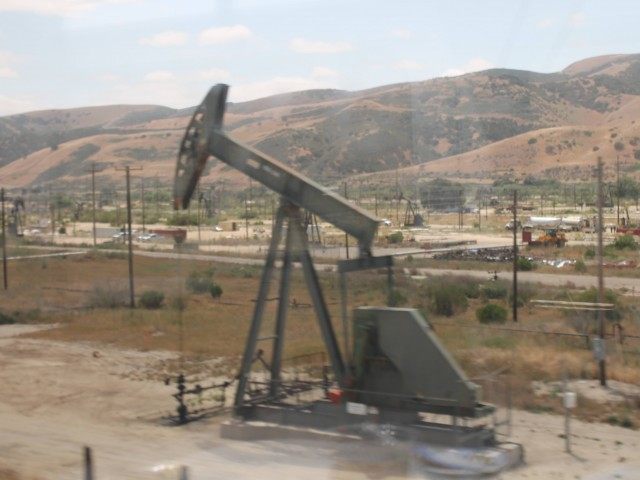OPEC’s attempt to over-produce crude oil for export to crush prices and bankrupt the American shale-fracking oil boom has failed, according to a draft OPEC long-term strategy report seen by Reuters ahead of the cartel’s policy meeting in Vienna on June 1st.
The report forecasts that crude supply from rival non-OPEC producers, led by the U.S., “will grow until at least 2017.”
“Since June 2014, oil prices have experienced a significant reduction, reaching levels even lower than the crisis experienced in 2008, yet non-OPEC supply is still showing some growth,” the OPEC report said.
Flat-to-down worldwide demand for oil means that OPEC’s 30 million barrels per day (bpd) share of production will fall to 28.2 million. The cartel can either cut output from the current over-production level of 31 million bpd, or tolerate depressed oil prices for a much longer period.
The current international price standard, called “Brent crude” has dropped from about $115 a barrel in June 2014 to $62 today. That is a direct result of the American shale-fracking boom adding 4.5 million barrels of oil per day to the U.S. market in the last 6 years. The U.S. standard, called “West Texas Intermediate” (WTI), sells at $57 a barrel, almost a 10 percent discount.
With revenues plummeting, most OPEC members are in a financial crisis and are forced to increase production from last year and flood the world market to financially survive.
Iraq has increased crude oil exports to almost 3 mpd, and intends to increase exports to a record 3.75 million barrels per day in June, according to Bloomberg News. Saudi Arabia increased crude oil production by 300,000 bpd in March to its highest levels in at least 12 years. The U.S. Energy Information Administration says the United States has been importing 896,000 barrels of Venezuelan crude oil per day, up almost 150,000 bpd. Iran, once OPEC’s second-largest producer after Saudi Arabia, plans to boost crude oil exports crude exports by as much as 1 million barrels per day (bpd) if the country can finalize a June nuclear agreement.
Although Russia is not an OPEC member and its crude oil production levels are a state secret, the Energy Ministry announced in March that twin state energy giants Gazprom and Rosneft achieved a post-Soviet era record of 10.71 million barrels per day in March.
All of these larger exports at lower prices was expected by OPEC to crush the U.S. shale-fracking boom. OPEC claimed fracking was too expensive to produce crude at lower prices. But U.S. oil production jumped by 150,000 barrels per day in March, and business analysts at IHS CERA now expect the cost of fracking to fall 32 percent, as drilling and service vendors slash prices to try to maintain customers. Total U.S. petroleum liquids production that hit 13.7 mpd at the end of 2014 could hit 15 mpd by the end of 2015.
The OPEC report warns: “Generally speaking, for non-OPEC fields already in production, even a severe low price environment will not result in production cuts, since high-cost producers will always seek to cover a part of their operating costs.”
The report added, “Since 1990, most of the forecasts concerning future non-OPEC oil supply have been pessimistic and often erroneous: For example, non-OPEC production was once projected to peak in the early 1990s and decline thereafter.”
OPEC publishes long-term strategy reports every five years, but its 2010 report did not even mention that shale oil might be a serious competitor.
For almost four decades, OPEC has been able to manipulate crude oil production to keep prices generally higher by acting as the swing producer. But “recent structural changes in the growth patterns of non-OPEC supply as a result of the substantial contributions from North American shale plays might prove to be a turning point.”
The report warns that new and cheaper technologies in extraction of tight crude, shale gas, and oil sands would guarantee aggregate growth at 6 percent per year and contribute 45 percent of the growth in energy production to 2035, according to Reuters.
Photo: File

COMMENTS
Please let us know if you're having issues with commenting.